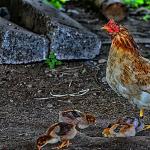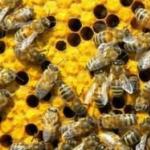Initialization (activation) of automatic sprinkler fire extinguishing systems (installations) occurs from the activation of thermal locks of sprinklers directly above the fire zone.
Below is one of the algorithms for the operation of a fire sprinkler installation:
In standby mode (before a fire occurs), all pipelines of the installation, including supply, supply and distribution pipelines of sprinkler sections, are filled with water and are under pressure, which is supported by a jockey pump, which is turned on and off by electric contact pressure gauges.
When a fire occurs, sprinklers above the fire are opened. As a result of this, the pressure in the system of supply and distribution pipelines drops, the valve of the control unit opens and water from the ring fire water supply is supplied to the fire. The pressure alarm in the piping of the sprinkler section control unit is activated. A “Fire” signal is issued to the automatic fire alarm system.
The consumption of fire extinguishing agent (fire extinguishing agent) through sprinklers leads to a decrease in pressure in ring fire water pipeline and activation of electrical contact pressure gauges on the pressure manifold pumping station, which issue a signal to start the main pump. The main pump is turned on, which takes water from the fire extinguishing water tank; it maintains the necessary pressure and flow rate of the fire extinguishing agent in the pipeline network. If the main pump does not operate or does not reach its design capacity within 10 seconds, the backup pump starts automatically.
On the supply pipeline after each control unit, liquid flow indicators are installed, from which the control signal for the supply of fire extinguishing agent (FMA) is removed.
Deluge automatic water fire extinguishing system
Desired reaction time. Wet sprinkler systems are the most common. The name "wet" means that the pipes are filled with water under pressure. The heat generated by a fire causes the dispensers located directly above the affected area to open and immediately release water, which will continue to flow until the control valve is closed.
Dry ones are those where the pipes are filled with compressed air rather than water. A special control valve, called a dry valve, is placed in the heating zone and avoids the flow of water until the fire activates the sprinkler. When the dispensers open, the air escapes and the dry valve opens, and only then does water enter the pipes and be discharged through the fire sprinklers. The main benefit of dry sprinkler systems is that they can protect these unheated or refrigerated spaces; wet systems may not work due to water freezing inside the pipes.
Unlike sprinkler fire extinguishing systems sprinklers of deluge installations do not have thermal locks and, accordingly, such systems are started from external systems fire detection: automatic fire alarm installations, sensors technological equipment and other incentive systems.
Below is one of the operating algorithms deluge curtains:
Advantages of water fire extinguishing
Systems fire safety. Pre-alarm sprinklers use the basic concept of dry systems: the pipes are filled with pressurized air rather than water. The difference is that the opening of the control valve is controlled by a separate fire detection system. In order for the water to be discharged, there is therefore a twofold consensus. These systems are used in cases where there is serious water damage due to accidental breakage of the dispenser or tubing. The main advantage of pre-alarm systems is the dual action required to release water: opening the pre-alarm valve and opening the sprinkler dispensers.
The deluge curtains are started under the condition that the manual valve of the curtain is open, according to the signals:
Automatically, when two fire detectors are triggered in one of the fire compartments near the corresponding section in the automatic addressable analogue fire alarm system (opening signal solenoid valve in deluge sections it is supplied from the APS).
. from the remote start button of the deluge machine in the security room.
This feature provides an additional level of protection against accidental water release. For this reason, pre-alarm systems are used in environments where contents may be damaged by water, such as archives, artifacts, rare libraries, and data centers.
Flood sprinkler systems have plug-free dispensers and a heat-sensing element, and the water is located upstream of special valve, the opening of which is controlled by a separate fire detection system. Unlike a closed dispenser system, water is released simultaneously by all dispensers. Flood systems are widely used in industries with high level such as chemical plants, fuel tanks or air hangars, where there is a risk of fire spreading quickly and therefore a large quantity of water must be supplied at once.
Thus automatic installations water fire extinguishing are the most used and widespread (fairly cheap) systems at present that do not require urgent evacuation of personnel.
Many of our Customers ask themselves this question: “Which fire extinguishing system to install at their facility, powder or water?” Let's take a closer look at each of them.
The main Italian technical standards concerning sprinkler systems are: The most complete and modern technical standard is the USA. Harmonized standards for fixed fire sprinkler systems. Structural and functional features.
This standard specifies the characteristics of spaces in which fire pumps are located. The rule therefore provides that the premises are protected by fire by separation or distance from the protected building that is readily accessible and that maintenance can be performed with relative ease. In addition, since engines may be running normally, minimal ventilation is required to exhaust combustion products and cool the machines.
Powder automatic fire extinguishing system.
Extinguishes all classes of fire by creating a specific fire extinguishing environment in the protected area. Most often used in volumetric fire extinguishing, this is when extinguishing occurs in limited space in order to create such a concentration of powder at which fire extinguishing occurs. During volumetric fire extinguishing, it is necessary to launch all modules located in the protected volume at the same time.
Essentially, this standard specifies design aspects that common sense and ordinary professional knowledge should be offered to any designer. In normal project development, the concept of "fire protection" or fire-fighting equipment is mistakenly identified with the stereotypical image of a hydrant or fire extinguisher, which are the most common means of extinction. On the other hand, fire safety equipment includes a wide range of measures aimed at preventing the occurrence of fires and, if necessary, monitoring and minimizing harmful consequences.
There is also local fire extinguishing, when extinguishing occurs in a specific place where a fire is detected. This extinguishing method is the most accessible, but may turn out to be ineffective.
According to the requirements of the regulations, for the system to be automatic, it must work without any human intervention. For these purposes, they use automatic fire alarms with all kinds of fire detectors: thermal, smoke, flame, IR and UV radiation, aspiration, etc. But most often they use smoke detectors, which reacts to the primary sign of a fire - smoke, which gives the system a high inertia in detecting and extinguishing a fire.
The function of these interventions defines three main lines in which the fire system, namely. " Fire protection"can be defined as a set of actions - actions aimed at preventing possible reasons which may create hazards and cause fire.
Prevent leakage and release to eliminate triggers. . Some of the most important preventative actions are provided as examples. To maintain in force electrical systems, gas networks, etc. save work, department, storage, etc. in order and clear. to ensure that flammable materials are placed in a safe place without triggers, containers must be closed, metal and marked with a flammability symbol, flammable losses must be stopped and leaks must be vented to prevent mixing of incompatible chemicals create non-smoking areas , and prepare to use all available firefighting equipment to train personnel in the use of firefighting equipment in use to prevent exodus from work sites to obtain special permits for hazardous work such as welding, grinding, etc. take care of the order and validity of the fire sign. "Passive" protection systems consist of those systems, always designed for a specific event, that limit the likelihood of occurrence and, if necessary, the extent and severity of consequences.
Water fire extinguishing system.
 To extinguish a fire, it uses ordinary water, both from public water supply systems and from underground wells with the necessary supply. Water fire extinguishing systems are most often used of the sprinkler (local) type, this is when a fire is detected and extinguished using a special device - a sprinkler, whose design combines a locking device that collapses at a certain temperature and a sprinkler that sprays water onto certain area(from 9 to 12 sq.m.). To extinguish in this area, a fire extinguishing pump station is required, which must contain: a working pump, a backup pump, a jockey pump and a hydraulic accumulator to protect against water hammer. Sprinklers are installed on the distribution pipeline from the pumping station, evenly across the entire area of the protected premises with a certain pitch. The main principle of extinguishing a fire in a water fire extinguishing system is cooling the combustion site.
To extinguish a fire, it uses ordinary water, both from public water supply systems and from underground wells with the necessary supply. Water fire extinguishing systems are most often used of the sprinkler (local) type, this is when a fire is detected and extinguished using a special device - a sprinkler, whose design combines a locking device that collapses at a certain temperature and a sprinkler that sprays water onto certain area(from 9 to 12 sq.m.). To extinguish in this area, a fire extinguishing pump station is required, which must contain: a working pump, a backup pump, a jockey pump and a hydraulic accumulator to protect against water hammer. Sprinklers are installed on the distribution pipeline from the pumping station, evenly across the entire area of the protected premises with a certain pitch. The main principle of extinguishing a fire in a water fire extinguishing system is cooling the combustion site.
Typical examples of passive protection are: Gas leak detection systems; automatic fuel interception systems; firewall walls; fire doors; compartments; containment barriers; coatings and fire retardant materials. Active systems protection mainly includes fire extinguishing systems and devices.
Extinction is mainly based on the use of a number of substances capable of blocking combustion. The substance used, type of intervention and methods of use will be proportionate to the nature of the products ignited and the extent of the fire. Therefore, it is important to know the strengths and weaknesses fire extinguishing agents to ensure that the results of active protection are always positive and remember that the wrong choice can lead to an inconvenient increase in the size of the fire. Below is a list of fire extinguishing agents and their corresponding performance characteristics on fuel.
Fire extinguishing system price.
This parameter became decisive when choosing automatic system fire extinguishing Let's take two buildings as an example:
1 warehouse or industrial building of 5000 sq.m., category B2, 12 m high;
2 warehouse or industrial building of 1000 sq.m., category B2, 6 m high;
The oldest fire extinguisher is water, which is a natural antidote to fire and is rich in nature. Water and extinguishing agent are the best known and used for ease of collection, low cost and non-toxicity. Firefighting with water is driven primarily by cooling due to high specific thermal characteristics and latent evaporation. When solids extinction is accomplished either by direct evaporation of water flowing through vapor and flame, or by "wet" action, which lowers the surface temperature of the materials and prevents the distillation of flammable vapors.
and summarize the installation values in Table 1 and Table 2.
Table 1. Building 5000 sq.m. with a ceiling height of 12 m, 60,000 cubic meters.
|
System type |
Total, rub. |
Installation cost |
|||
|
Water fire extinguishing(sprinkler) When extinguishing fire, water is used in the form of a full or fractionated stream. In this form, water can only be used to extinguish solids. Another way to use water is to reduce it appropriately in droplets using special spears to maximize the cooling and suffocation power. Regardless of this, dripping water, more or less subtly, is often used in firefighting, both for extinguishing fires and protecting equipment from heat, in addition, it is possible to control and, to the limit, fire extinguishing flammable liquids. |
(including pumping station) |
Table 2. Building 1000 sq.m. with a ceiling height of 6 m, 6,000 cubic meters.
|
System type |
Cost of equipment and materials, rub. |
Required supply of modules, rub. Depending on the temperature and pressure conditions to which it is subjected, carbon dioxide can exist in solid, liquid and gaseous states. It is stored in the market, usually in pressure vessels. If carbon dioxide released into the atmosphere, most of it quickly evaporates, and the rest solidifies as carbon snow, giving the plume a smoky and whitish appearance; At the same time cooling the air, it causes moisture to condense in the form of fog. In addition to the above effects, carbon dioxide also has a cold cooling effect. |
Total, rub. |
Installation cost |
Total cost of installation, rub. |
|
Powder |
|||||
|
Water (sprinkler) |
(including pumping station) The main advantages of this fire extinguishing agent are related to the ability to spread combustion conditions at each point, absolute purity and non-electrical conductivity, which allows its use on live equipment. Various electrical equipment for painting booths, drying cabinets etc. electronic power plants and data centers closed warehouses, archives, canals and dust tunnels, etc. spinning machines closed type. For this purpose, adequate alarm systems must be installed before and during unloading, safety exits and respiratory protection devices. |
*When calculating the water fire extinguishing system, we assumed that water was present at the site in sufficient quantities. If water supply requires the installation of wells and reservoirs, then the cost of water fire extinguishing will be significantly higher.
Conclusion on the cost of installing a fire extinguishing system.
So what conclusion can be drawn from the calculations obtained? For small objects up to 2000 sq.m. and volume up to 12,000 cubic meters installation cost powder system fire extinguishing is lower than water, but when the parameters of the protected area and volume increase, the cost of a water fire extinguishing system will decrease.
Fire extinguishing agents, called "fire powders", consist of a mixture of sodium or potassium bicarbonate, ammonium sulfate or ammonium phosphate with various additives that improve its ability to store, fluctuate, repel water and in some cases compatibility with foams. Chemical powders are stable at high and low temperatures. Regarding toxicity, the components used in the powders are presented by manufacturers as “non-toxic”, however, discharging large quantities may cause temporary breathing difficulties during and immediately after discharge.
Cost of operating a fire extinguishing system.
We consider this parameter to be important, due to the fact that the substance (powder) used in powder fire extinguishing has a shelf life of 5 years, i.e. after 5 years it is necessary to dismantle all modules powder fire extinguishing, take it to the manufacturer to replace the powder, and then re-install and adjust the system. The cost of such a procedure can be up to 50% of the initial installation cost. The water fire extinguishing system does not have this feature.
The negative effect of catalysis, according to various scientists, is the most important factor in extinguishing powders. In a combustion reaction, the end products are produced through intermediate reactions which, if properly inhibited, interrupt the chain of reactions and therefore combustion itself. The dielectric constant of the powders allows them to be used in the presence of any live electrical or electronic equipment; however, they are not practical in the case of computers, relays, telephone switches, or other delicate equipment that may be thrown off by the power of the powdered energy and which then require complex and expensive cleaning operations.
Pros and cons of fire extinguishing systems.
Among the advantages of powder fire extinguishing:
High response inertia, because reacts to the primary sign of fire (smoke);
- the cost of installing powder fire extinguishing is lower than the cost of a water extinguishing system at facilities where there is no water supply and with a volume of less than 12,000 cubic meters.
Among the disadvantages of powder fire extinguishing:
The service life of the fire extinguishing powder is only 5 years;
Susceptible to false alarms due to power surges;
High risk of malfunction, because 50% consists of communication and automation wires, breaks and failure of automation are possible;
Aggressive properties of fire extinguishing powder, the powder contains alkaline chemical elements, which can damage stored goods and electronic components in the event of a false alarm;
One-time extinguishing, i.e. if, when a powder fire extinguishing system is launched, the fire is not extinguished, then the system does not give a second chance, unlike a water fire extinguishing system;
High cost of operating the system;
Requires 100% supply of powder modules, largest area;
Make it difficult for people to orient themselves and breathe after triggering;
Does not exclude the installation of internal fire-fighting water supply(ERF), in contrast to water fire extinguishing, where the ERW system can be combined, which means saving on pipes, pumps, automation, etc.
The advantages of water fire extinguishing:
Low cost of fire extinguishing agent;
Low cost of operation;
Fire extinguishing area, not volume;
High fire extinguishing ability of water;
Possibility of connection from mobile fire fighting equipment;
Possibility of combining with internal fire water supply;
Cooling load-bearing structures in case of fire.
Disadvantages of water fire extinguishing:
The need for guaranteed water supply;
The response time is lower than that of an automatic powder fire extinguishing system;
Water conducts electricity and protection against electric shock is required.




